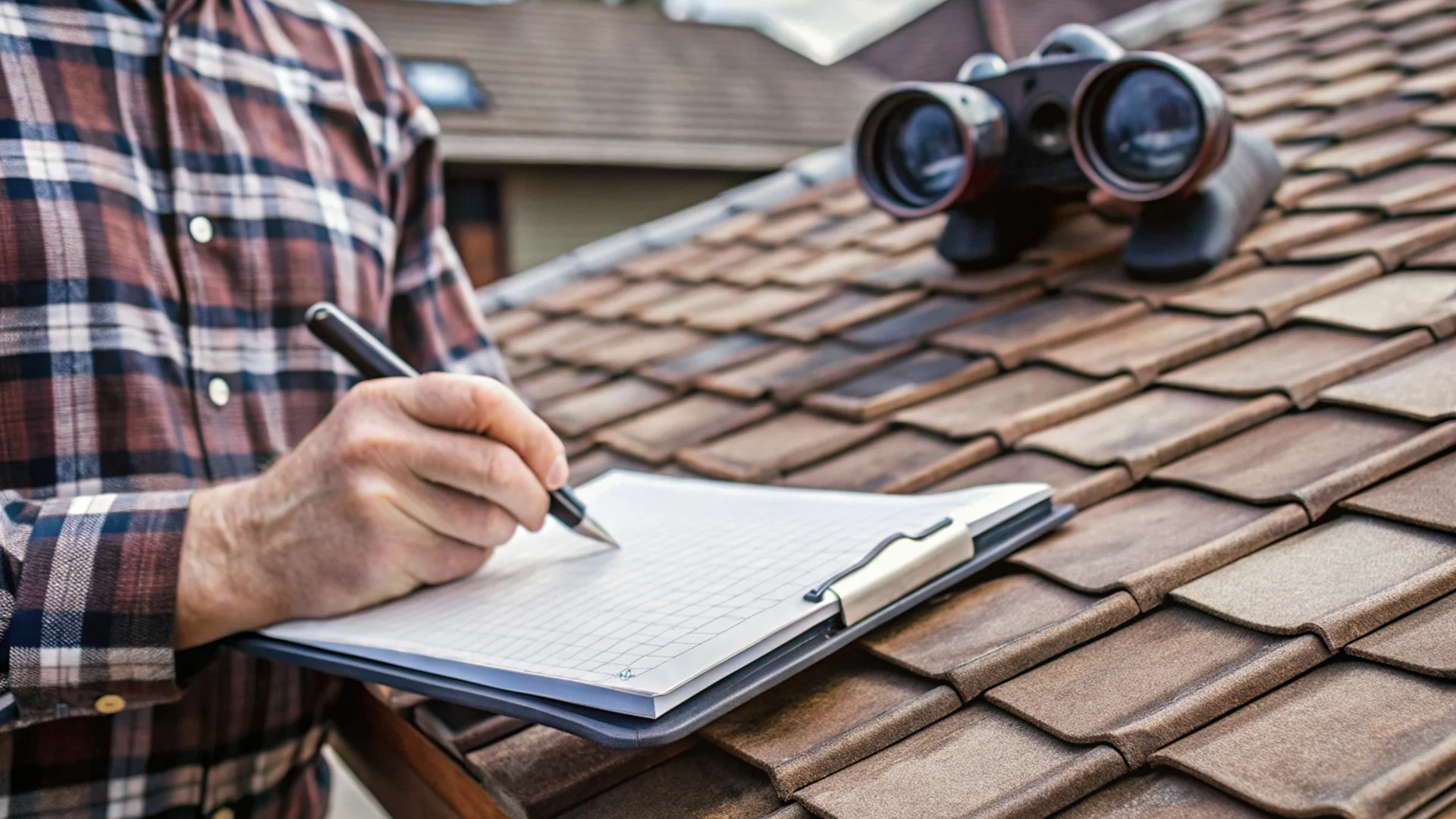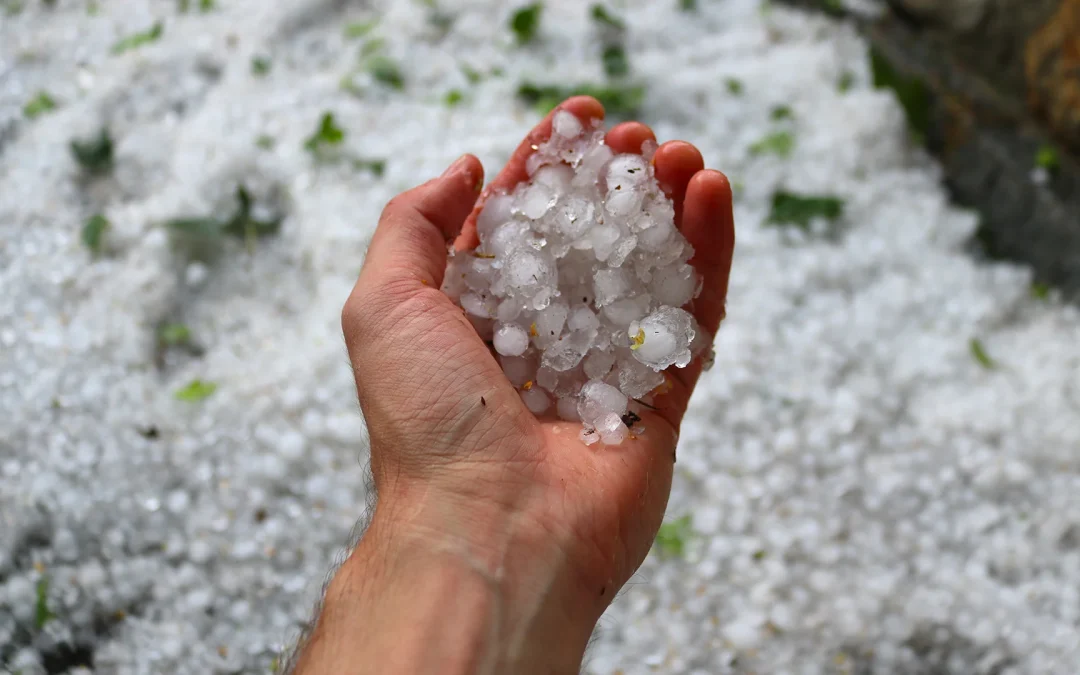Hail storms can seem to come out of nowhere and leave considerable damage on your roof quickly. After a hail storm, it is crucial to assess any possible damage on your property to plan for necessary repairs, but it can be a daunting process. However, a roof hail damage inspection can make the process much smoother and will help you repair your roof damage as efficiently as possible.
Types of Roof Hail Damage
Hail storms can vary in intensity, but even the smallest hailstones can cause unforeseen damage to your roof. Understanding the specific impact of hail is crucial, as the type and severity of damage can vary based on factors like hail size, storm intensity, wind speeds, and the materials and structure of your roof. Here are detailed descriptions of common hail damage types:
- Cracked Shingles: Hail impacts can crack shingles, compromising the roof’s ability to shield your home from weather. These cracks can be subtle or more pronounced, depending on the hail’s size and the shingle’s material.
- Granule Loss: Hail may knock off the protective granules of asphalt shingles, accumulating in your gutters. These granules are crucial for protecting the shingle from UV rays and extending its life, and their loss can accelerate roof aging.
- Exposed or Fractured Fiberglass Mats: When hail breaks through the shingle’s surface, it can expose or fracture the underlying fiberglass mat, severely diminishing the roof’s structural integrity and water resistance.
- Weak or Loose Seals: Seals between shingles can weaken from the trauma of hail impacts. Loose seals increase the risk of shingles being blown off by wind, leading to leaks and extensive damage.
- Dents and Markings: Hail can leave dents or markings on shingles and metal roof components. While these may seem cosmetic, they can be precursors to more severe issues, like cracks and leaks.
Should I Get My Roof Inspected After a Hail Storm? Key Signs You Need an Inspection
You may debate whether to contact a home inspector to check your roof after a hail storm. Let’s examine some signs that it is time to schedule a roof inspection.
- There are visible faults: If you see apparent roof damage, your best bet is to call an inspector as soon as possible. These visible damages could include dents, missing shingles, and discolorations. Make sure to be careful when attempting to inspect your roof yourself, and do not attempt to get on your roof alone.
- There are granules in your gutter: After a hail storm, you might find gritty granules. This usually means the granules on your shingles have been damaged and knocked loose, signaling potential further damage to your roof.
- There are leaks or water stains in your home: Water entering your home through the roof can be a telltale sign that your roof needs a repair. Look for wet spots on your walls or ceiling.
If you’ve recently experienced a severe hail storm and are uncertain about the extent of damage to your roof, it’s wise to err on the side of caution. Scheduling a roof hail damage inspection can help clear up doubts and ensure your roof’s integrity.

Importance of a Roof Inspection After Hail Damage
A professional roof hail damage inspection is the best way to determine if your roof has sustained damage after a storm and to decide on the appropriate actions to take. Here are the benefits of a professional inspection if you suspect hail damage to your roof.
- Catch faults you can’t see yourself: Hail often causes subtle or internal roof damage that isn’t immediately obvious, like shingle impairment. A professional inspector can safely identify these issues, ensuring you address all necessary repairs.
- Avoid future damage: If roof damages are left untreated, they can lead to more extensive damage. For instance, the structural integrity of your shingles can weaken and cause your roof to become prone to leaks.
- Have better outcomes with your insurance company: Professional roof inspections set you up for success when working with your insurance company. The inspectors will help you take photos for proper damage documentation, save money, and avoid paying for more repairs than necessary.
- Be prepared for future storms: Chances are, if your area has a hail storm once, there will be other severe storms in the future. If you do not fix damages from hail storms, your roof will be weaker and more prone to damage when future storms hit.
- Increase your roof’s lifespan: Untreated roof damages can expedite the regular wear and tear of your roof. Professionals will help you determine how to repair your damages to maximize your roof’s strength and maintain its support for as long as possible.
If you suspect roof damage after a hail storm, look no further than Kissee Inspection Services. Our home inspection service includes identifying the subtlest signs of wear and damage. Trust us to assess your roof thoroughly and provide the insights you need to take the right steps forward. Contact us today to schedule your professional inspection.




